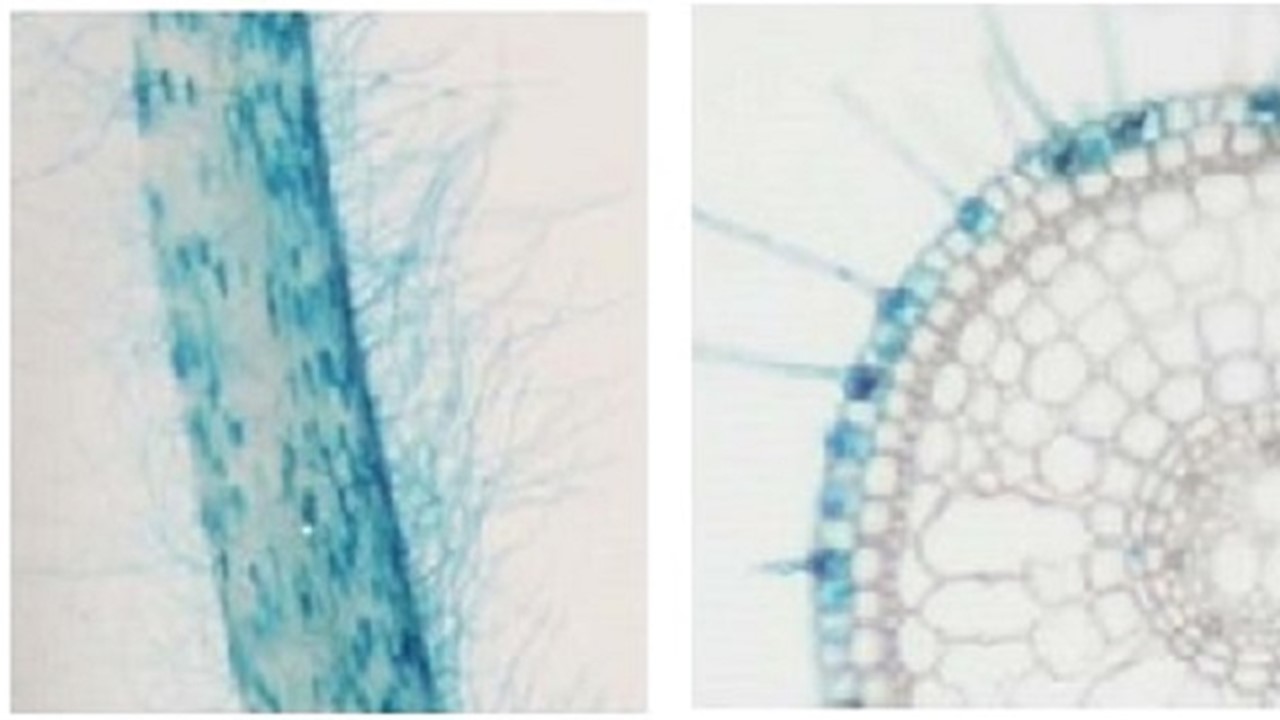Photo Carousel Links
American beautyberry (Callicarpa americana) was found by Research Chemist Charles Cantrell to produce a compound that he named callicarpenal that is a potent insect repellent.
The smoke of the burning dried male flower of the breadfruit plant is used by some native people of Polynesia to repel biting insects. Research Chemist Charles Cantrell has determined the chemicals responsible for this property. He is developing blends of these compounds for natural insect repellents.
The root hair-specific expression patterns directed by gene promoters isolated from Sorghum bicolor are visualized in mature root hair cells of transgenic rice seedlings using the β-glucuronidase reporter gene. This promoter is being utilized to impart allelopathic traits into crops.
A compound from Texas torchwood (Amyris texana) was modified to produce an insect repellent that is three-fold more effective than DEET. It is patented and is being developed.
Blue green algae (cyanobacteria) like these (Oscillatoria peronata and Oscillatoria agarchii) produce bad-tasting chemicals that accumulate in fish grown in aquaculture. This problem is costly to the aquaculture industry. Microbiologist Kevin Schrader has discovered and patented a natural product-based chemical the will selectively remove these algae from aquaculture ponds.
Mission
To develop natural products for use in agriculture in order to produce more toxicologically and environmentally benign pest management tools and to improve the nutraceutical value of crops. A secondary mission is to do fundamental research to aid in the development of alternative crops for production of pharmaceuticals and botanical supplements.





